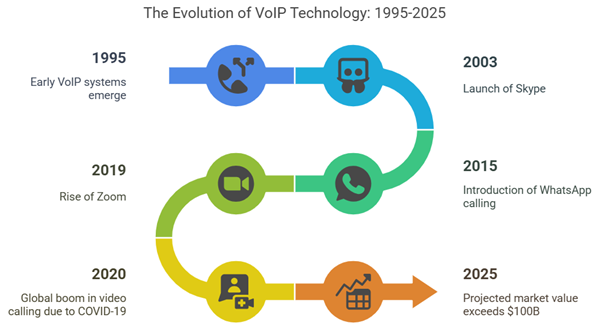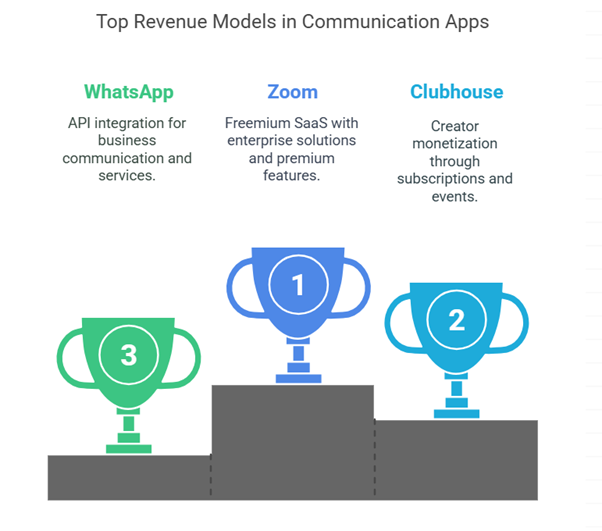Ever tried explaining to your grandma how to join a Zoom call? It’s like defusing a bomb. But guess what? That’s the magic of VoIP and video calling apps—they’ve become so ingrained in our lives that even the least tech-savvy folks are trying to get in on the action. Whether it’s FaceTiming with family or hopping on a late-night business pitch with clients halfway across the globe, we’ve become addicted to real-time connection.
For creators, founders, and digital dynamos, this space is bursting with opportunity. The post-pandemic surge in remote work wasn’t just a blip—it was a loud wake-up call. Businesses, coaches, therapists, and even gamers are now relying on VoIP and video apps to run the show. The kicker? Most of these apps operate on some brilliant revenue mechanics. Spoiler: it’s not all just “freemium and pray.”
If you’re toying with the idea of building your own Zoom, Skype, or even a Moj-style social call platform, stick around. We’ll crack open the business models, show you real-world examples, and spotlight how Miracuves helps innovators like you turn bold ideas into fully-functional, scalable, money-making products.
Why the VoIP & Video Calling Market is Booming
The global VoIP market is expected to hit $102.5 billion by 2026, while video conferencing is projected to touch $19.73 billion by 2030 (Statista, TechCrunch). That’s not just growth—it’s rocket fuel.
Trends Driving the Boom
- Remote Work & Hybrid Culture: From startups to Fortune 500s, everyone’s dialing in.
- Telehealth & Online Coaching: Therapists and fitness trainers now Zoom more than gym.
- Creator Monetization: Livestreaming with voice/video tips has become a whole new income channel.

Core Business Models for VoIP & Video Calling Platforms
Let’s dissect how platforms like Skype, Zoom, WhatsApp, and Houseparty make money—and how you can too.
1. Freemium with Feature Upgrades
Offer a free version with essential features like 1-on-1 calls, but charge for:
- Group calls with >4 users
- HD video
- Call recording
- Analytics or admin dashboard
Think Zoom—the free plan lures them in, and the “Your meeting is about to end” prompt nudges them toward premium.
2. Subscription Plans
Flat monthly/annual plans work great for businesses. Create tiered offerings like:
- Basic: $5/month for up to 5 users
- Pro: $15/month with added controls
- Enterprise: Custom pricing with integrations
Ideal for: SaaS-style video platforms for schools, consultants, or webinars.
3. Pay-As-You-Go (Usage-Based)
Billing users per minute or per GB used works well for API-driven VoIP services like Twilio.
- Micro-transactions = lower entry barriers
- Great for niche apps with unpredictable usage
4. Ad-Supported Model
Offer free access, but show ads before/after calls or during idle time.
- Banner or interstitial ads
- Sponsored backgrounds or watermarks (yes, that’s a thing)
Use sparingly to avoid UX damage.
5. In-App Purchases & Tipping
Social video apps like Moj or Bigo Live thrive on virtual gifts, emojis, and sticker packs. Users buy coins to send digital love.
- Create gamification layers
- Boost user-generated content & engagement
6. Affiliate & Integration Revenue
Allow 3rd-party tools like Calendly, Notion, or CRMs to integrate. Charge partners or offer them visibility.
Essential Features that Fuel Monetization
Here’s what your app needs if you want to generate real revenue—not just traffic.
Scalability First
You’ll need robust servers and WebRTC or SIP-based architecture that scales with demand. No one pays for lag.
Multi-Device Support
Smartphones, tablets, smart TVs—even wearables. Users expect seamless transitions.
Security & Encryption
HIPAA-compliant? End-to-end encrypted? These aren’t buzzwords—they’re deal-breakers for paying users.
Custom Room Links & Admin Tools
Especially for schools, events, or therapists.
Retention Provides Recurring Revenue
Once you acquire users, how do you keep them?
- Push Notifications: “Your friend is online” or “New virtual background available”
- Onboarding Walkthroughs: A smooth UX reduces drop-offs
- Gamification: Give badges, rewards, or daily streaks
- Integrate CRM/Calendar: For business clients, tie-ins mean fewer drop-offs
Read More : Revenue Model for Video Calling Apps
Tech Stack & Tools to Build Your App
Wondering what goes behind the curtain? Here’s a basic breakdown.
Backend
- Node.js, Django, or Ruby on Rails
- Twilio or Agora.io for VoIP
- AWS or Firebase for cloud
Frontend
- React Native (mobile), React.js/Vue.js (web)
- Tailwind or Bootstrap for UI
Real-Time Engine
- WebRTC
- Socket.io

Real-World Examples & What You Can Learn
Zoom: Premium-Based SaaS
- Upsell-heavy UX
- Freemium core with enterprise features
Clubhouse (VoIP + Community)
- Audio-only model with invite-only hype
- Focused on FOMO and niche micro-communities
WhatsApp: Utility + Scale
- Free, but monetizes via WhatsApp Business API
- Partnered integrations & usage-based billing

What’s Next for VoIP & Video Apps?
- AI Filters & Voice Cloning: Make calls more fun or productive.
- AR/VR Video Calling: Think Meta’s virtual meeting rooms.
- Blockchain Privacy: Truly decentralized calling—no metadata snooping.
Conclusion
VoIP and video apps aren’t just communication tools anymore—they’re full-fledged business ecosystems. Whether you’re targeting students, remote teams, or content creators, there’s a model that fits your vision (and your wallet). From tipping systems and premium tiers to gamification and integrations, the possibilities are vast and very monetizable.
At Miracuves, we help innovators launch high-performance app clones that are fast, scalable, and monetization-ready. Ready to turn your idea into reality? Let’s build together.
FAQs
1.What’s the easiest way to monetize a new video calling app?
Start with freemium. Offer essential features for free and unlock advanced tools via subscriptions.
2.How much does it cost to build a VoIP app?
Depending on features, it can range from $20K to $200K. Using a ready-made clone like Miracuves’ Skype clone saves time and budget.
3.Which tech stack is best for video calling?
WebRTC for real-time calls, React Native for cross-platform UI, and Firebase or AWS for cloud services.
4.Can I include ads in my video calling app?
Yes, but ensure it doesn’t interrupt the call experience. Ads between sessions or on call-end screens work better.
5.What if I want users to tip hosts or streamers?
Use in-app coins or microtransactions. It’s common in social VoIP platforms like Bigo or LivU.
R
Related Articles :








